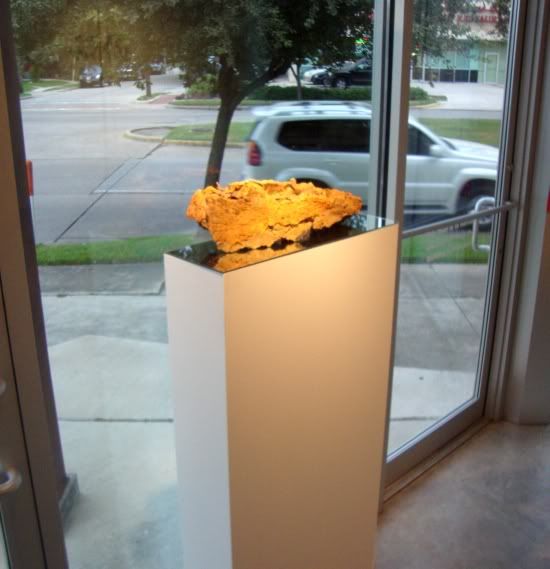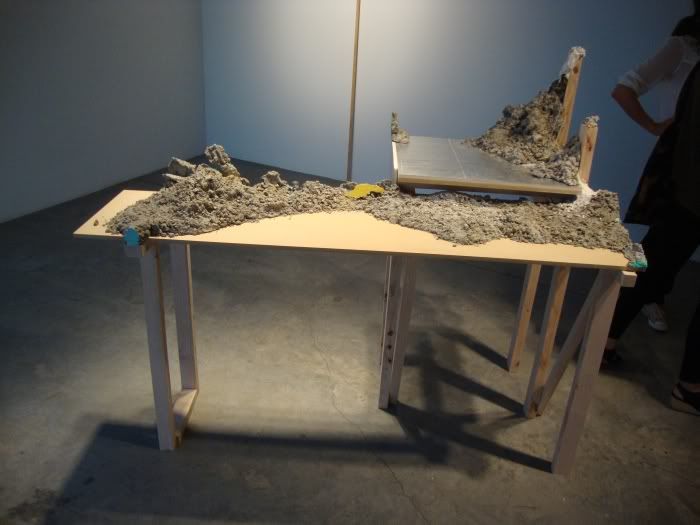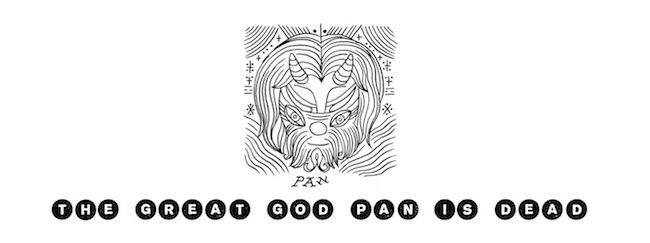
Jeff Forster, Endangered Species, native clays and palm fronds dipped in porcelain then fired, 2010
Palm fronds dipped in porcelain then fired--so that's how he makes those little clay chips. I was wondering that ever since I saw his piece Frailty. What interests me about the process is, what happens when you take something organic and/or flammable and fire it in a kiln? Does the organic part burn away, leaving just the ceramic part? This has been on my mind ever since I won the two Marie Weichman porcelain rags which were apparently made in a similar way.
This piece (and one other in the show) were made out of similar little ceramic pieces. Installing them means scattering the stuff on the floor, so the dimensions are, as they say, variable. I think maybe the are meant to evoke a sense of crumbling ruin, as if you have stumbled across a site that was once built up but is now a shattered and decayed remain. That's how it feels to me. There is something amusing about transporting this into a pristine art gallery.

Jeff Forster, Remnant of Reflected Space, fired native clay, mirror, and naturally collected vegetation, 2009
If the former piece was meant to evoke the decay of something man-made, this piece seems like an attempt to contrive something that appears natural. Except for the mirror--I'm not sure what that's all about. The location is particularly interesting--against a glass. It can be seen from the outside and when you view it from the inside, you see the sidewalk and the street and trees and passing cars, forming kind of a backdrop for the piece. If the object is man-made nature--a "rock" formed from natural clay (as slate is nature-made rock formed from clay), then what we see through the window, our built and grown environment, is also man-made "nature." Maybe then the mirror is meant to remind us that the "rock" is a reflection of what we do in our cities and towns. We build our own "nature," our own environment.

Jillian Conrad, Pile, wood, concrete,foam,paint, glitter, 2010
Jillian Conrad, at first glance, seems like an apt partner in this exhibit. But there is a difference in their work. While Forster's work may be chaotic and may resemble decay, it is ultimately crafted using one of mankind's oldest crafts. Conrad's pieces, while constructed, seem deliberately uncrafted. For instance, the wooden table in Pile is not the result of carpentry, but rather the result of nailing pieces of wood together. The concrete looks more like concrete accidentally spilled at a worksite than concrete deliberately formed for some purpose. That's the feeling I get from looking at this--a temporary work-table assembled at a construction site. All the materials (save the glitter) are materials construction workers might use to build a house or commercial structure. It's the kind of object that, after the job was done, would be broken up and thrown in the dumpster with the rest of the waste products. Put in a gallery recontextualizes it. Whether this interpretation has anything to do with Conrad's intent, I have no idea. But it's what I saw.




No comments:
Post a Comment